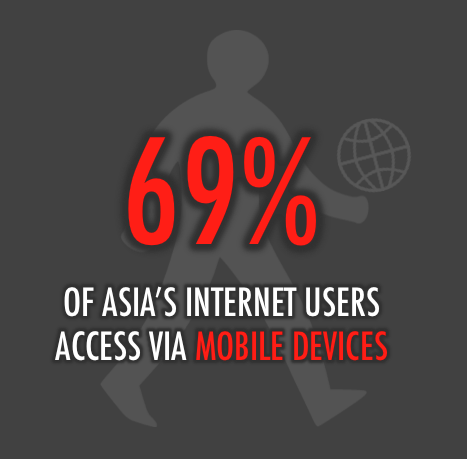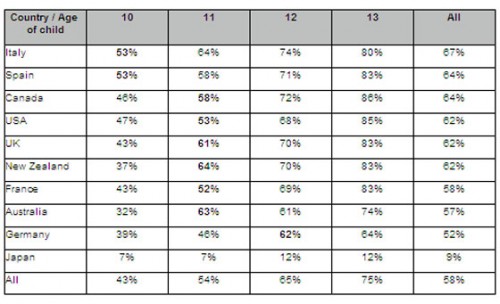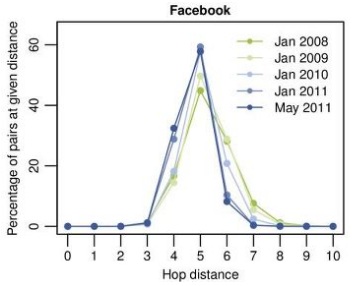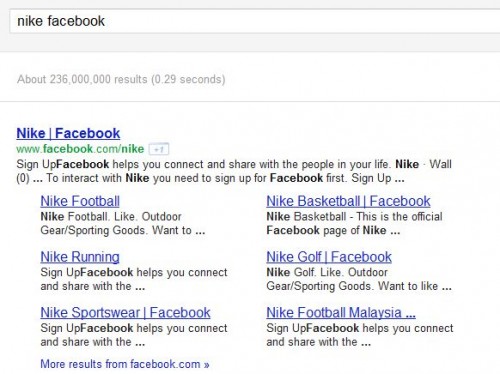We Are Social Asia Tuesday TuneUp #5
More evidence of social media’s business value
A report by business consultancy Bain and Company has revealed yet more evidence that investing in social does lead to monetary results. According to the study, customers who engage with companies through social media channels spend 20 – 40% more money with those companies than other customers, as well as demonstrating a deeper emotional commitment to the companies.
Sina launches messaging app that leverages on its Weibo network
Sina recently unveiled Weiyou, its instant messaging app built specifically for users on Sina Weibo, Sina’s microblogging platform. Compared to other similar instant messaging services, Weiyou will enjoy an existing and extensive network in Sina Weibo’s 250 million users. The app allows users to send direct text and voice messages to one another, and effectively works as a group-messaging app as well. It is available for download on Android.
South Korean bloggers turn journalists
South-Korean startup TNM, a media organization and content provider, has built a platform for news and analysis by partnering with 300 of the country’s most influential bloggers. In its latest project, TNM has partnered with Yonhap, South Korea’s largest news agency, to develop a crowdsourced news site that runs articles written by bloggers themselves. Kurry – a mix of three Korean words that stand for ‘material’, ‘market place of ideas’, and ‘mixture of content’ –is designed to be a go-to online resource for South Koreans seeking breaking news and expert analysis.
Twitter and Mixi partnership?
Twitter Japan and Mixi, one of Japan’s largest social networks, will be holding a joint press conference on Wednesday, November 30. Even though details have not been disclosed, a partnership between the two seems very likely. Japan is one of Twitter’s strongest markets, with Japanese its second most used language. Japanese technology blog Asiajin speculates that Mixi may replace Mixi-voice, the Twitter-like service that runs on its platform, by integrating the international microblogging site. We’ll keep you updated.
The value of a fan
According to SocialCode, the latest in a slew of such studies, the average monetary value of a brand’s fan on Facebook is $10, assuming a constant cost-per-click of $1. The study also found that fans perform desirable actions such as installing an app or making a purchase at a much higher rate, and it’s significantly cheaper to prompt them to do so through advertising than it is to prompt non-fans. However, SocialCode did not take offline sales for CPG advertisers into account, and so the value of fans could be an underestimate.
Comments more valuable than likes
EdgeRank used Facebook metrics to figure out the value of comments and likes, finding that for every comment a post gets, it received an average of 15 clicks, compared to just 3 for every like. This means that a comment is roughly four times more valuable than a like, reinforcing the importance of creating engaging content that will stimulate discussion. Day of the week is also important, with posts on Wednesdays having the best shares and clicks ratios.
Mobile social networking continues to grow
Mobile is driving a significant weight of social media adoption around the world. Our series of reports on the social, digital and mobile landscapes of different countries around Asia – launched earlier today – will illustrate this in dramatic style over the next few days, but here’s a taster ahead of their release:

This is despite the fact that fewer than 20% of Asians own a smartphone.
Meanwhile, research by comScore has found that the audience for mobile social networking in Europe’s five largest markets grew 44% in the last year. comScore Europe vice president for Mobile, Jeremy Copp, says that this growth has been “driven largely by the growth in smartphone adoption, making it easier than ever for users to stay connected and engage in social activities while on-the-go”. 46.8% of this audience access social networking sites daily, and Facebook remains the most popular site, with an average monthly audience of 39m mobile users in Europe during September.
MINI Getaway in Tokyo
The MINI Getaway reality game will take over Tokyo on Dec 3 after a successful launch in Stockholm last year. The location-based game requires smartphone users to hunt and ‘hold onto’ a MINI for 9 days with the help of a mobile app, which is available on both iPhone and Android app stores. The ultimate winner will win a real MINI Coupe. This Japanese campaign will be launched on a much larger scale than in Stockholm, with the Tokyo gaming area almost 32 times larger at 621 square kilometres. The population in the gaming area alone stands at 8.7 million. Plenty of running will be involved as players try to ‘get away’ from other users in hopes of holding onto the MINI. Time to hit the gym.
Facebook integration benefits e-commerce
Sociable Labs has found that 50% of visitors to ecommerce sites are logged in to Facebook simultaneously. What’s more, 88% of Internet Retailer Top 200 retail sites are integrated with Facebook, strengthening the impetus for using social data to personalise customers’ e-commerce experiences.
Digital coming of age
According to a Digital Diaries survey, by the time most kids in the West turn eleven, they have already moved onto mainstream social networks like Facebook and Twitter. Japanese children have the lowest social network penetration out of the surveyed countries.

The Anatomy of Facebook
In collaboration with researchers at the Università degli Studi di Milano, Facebook have released a pretty impressive account of the social network’s digital anatomy. Their study covered all 721 million active Facebook users at the time – that’s more than 10% of the global population.

Using the ‘six degrees of separation’ model, which states that, on average, any two people are separated by no more than six intermediate connections, the study found that six degrees actually overstates the number of links between typical pairs of users; the average distance in Facebook between users is 4.74 hops. That’s down from 5.28 hops in 2008. Therefore, as Facebook has grown over the years, representing an ever larger fraction of the global population, it has become even more connected. How social is that.
Seamless sharing on Facebook: like?
Critics are not fans of Facebook’s seamless sharing. As ReadWriteWeb’s Marshall Kirkpatrick puts it;
“When you see a headline posted as news and you click on it, you expect to be taken to the news story referenced in the headline text – not to a page prompting you to install software in your online social network account … That hijacking of your navigation around the web is the kind of action taken by malware. It’s pushy, manipulative and user-hostile.”
But publishers are giving the seamless sharing system a big thumbs up. Seamless sharing has led to The Independent’s Facebook traffic increasing several times over, partly due to the high number of shares of years-old content. These positive responses will no doubt see a strong growth in Facebook’s importance to publishers.
Australian brands seek Chinese social media
According to online communications agency Mailman, more Australian brands are seeking to establish a presence on Chinese social media platforms in order to better engage Chinese customers in Australia, and in China. There are approximately 670,000 people of Chinese birth or descent living in Australia based on ABS data. Australian brands increasingly recognise the benefits of interacting with customers on Twitter and Facebook, and see the value in emulating their current practices with their Chinese-speaking customers, especially to reach the 235 million people on Chinese social media platforms. Mailman identifies the greatest area for growth among brands targeting tourists or students from China.
Google Doodles shareable on G+
Not only were the Thanksgiving Turkey Google Doodles customisable, they were also shareable on G+. Google is trying to make sharing on Google+ all the more convenient by integrating G+ sharing links on its own content. By introducing its social network to search users who will be exposed to Google Doodles, Google can effectively convert Doodle visits into account registrations, which it currently needs.
Google’s new organisation of a brand’s Facebook pages still a little off
Google algorithms now organise a brand’s Facebook pages by name, grouping together results as below:

Although this has resulted in a number of strange groupings, this is still great news for brands. If they have an overarching Facebook brand page, their smaller pages can now be found more easily by users. It also adds site links to individual pages as well, which should drive more traffic to these pages.
Google Google+ TV ads
It seems Google is going all out to promote its social network. Over the Thanksgiving weekend it ran television adverts for Google+. The ads are essentially the same as the videos released for the site’s debut in July 2011, despite the length being around a minute longer than Mad Men would advise.
Google+ is also sponsoring and live streaming a four-game NBA exhibition tourstarring LeBron James, Carmelo Anthony, and other big stars next month, who will each host a game in their respective hometowns.
Google+’s big players
Another reason to dust off your Google+ account – Barack Obama is on the site now. This is big news for the social network, since Obama’s social media clout is pretty sound and is often touted as a major factor in his successful first presidential campaign. And yet the lack of excitement surrounding Obama’s arrival is rather disappointing – his first post had just 110 shares after 12 hours. Furthermore, Britney Spears is now the most followed person on Google+, with 773,805 followers. Obama has only 7,346. Come on, Barack, get your act together.
Has the tech bubble popped?
With news of Groupon trading below its $20 per share IPO price and LinkedIn’s 11% fall in shares over the course of last week, doom mongers could be forecasting the deflation of the tech bubble. However, it’s going to take a little more than a poor week for Groupon and LinkedIn for most to start selling their tech shares.
And the Black Friday winners are …
Facebook stats from Socialbakers reveal that over the Black Friday holiday weekend,Walmart maintained the highest number of fans as well as gaining almost 200,000. However, Target gained 500,000 new fans and was the only retailer to increase its fan engagement. The holiday spending continues today with Cyber Monday – expect the results of this next week.
KIA television advert integrates Facebook
Many television adverts feature a Facebook or Twitter address at their end, but KIA takes social integration to the next level with an advert that continually references a social network. We like.
Persil crowdsources brand ambassador via Facebook
Unilever are inviting their Facebook VIP club members to choose who they think should be the next ‘stain ambassador’ that they think could best represent the brand’s message that ‘getting dirty can be fun’. There are 10 choices, including survival expert Bear Grylls and even non-celebrity mums and dads.
Nivea’s friendship-driven Facebook campaign
Expanding upon their ‘moments of closeness’ ethos, Nivea have created a Christmas Facebook campaign that lets users send gift packs to their friends wrapped in customised paper featuring photos and comments that illustrate their friendship as it appears on Facebook. This is more heart-warming than toasting your toes by the fireplace, and the gift packs come at affordable prices ranging from £6 – £13. Though we’re not sure whether we’d want Facebook pictures there for all to see under the Christmas tree …
A twist on the old pop-up shop
Pop-up shops on a brand’s Facebook shop are so passé. Now it’s all about pop-up shops for blogs, as demonstrated by Lagerhaus’ original initiative of inviting leading interior design blogs to embed a pop-up shop widget on their blogs and customise it with their favourite products. This not only takes advantage of the extra reach the blogs will give them, but also has more credibility as the products are chosen and endorsed by the bloggers themselves. Lagerhaus’ pop-up shop campaign generated 13,000 peer-to-peer invitations to the fan-only opening of the online store, and increased Facebook fans by 226% and interactions by 360%.
Think before you tweet
Quantas have ruffled their followers’ feathers by running a Twitter competition that asks people to describe a “dream luxury in-flight experience” amid the airline’s labour dispute and after last month’s grounded aeroplanes situation.
Durex have also experienced a social backlash after the South African account posted a joke that many found offensive and inappropriate:
“Why did God give men penises? So they’d have at least one way to shut a woman up. #DurexJoke”.
Well, at least the controversy got #Durexjoke trending, though not for the right reasons.
Hotel owners fear blackmail from Tripadvisor users
We all know the damage a bad review can do, and it seems that some Tripadvisor users are leveraging this to try and get free upgrades, refunds and extras from hotels, despite nothing being wrong with their experience. More than 80 hotel and bed-and breakfast owners have reported being subjected to such threats from customers, and thousands more have claimed fraudulent reviews. Tripadvisor have spoken out against such practices by its users.